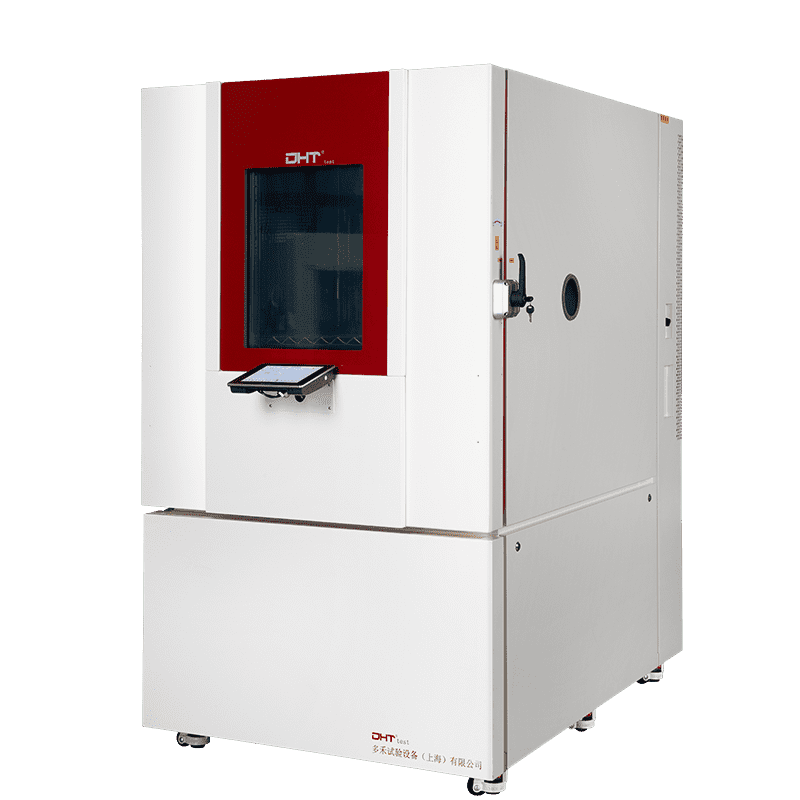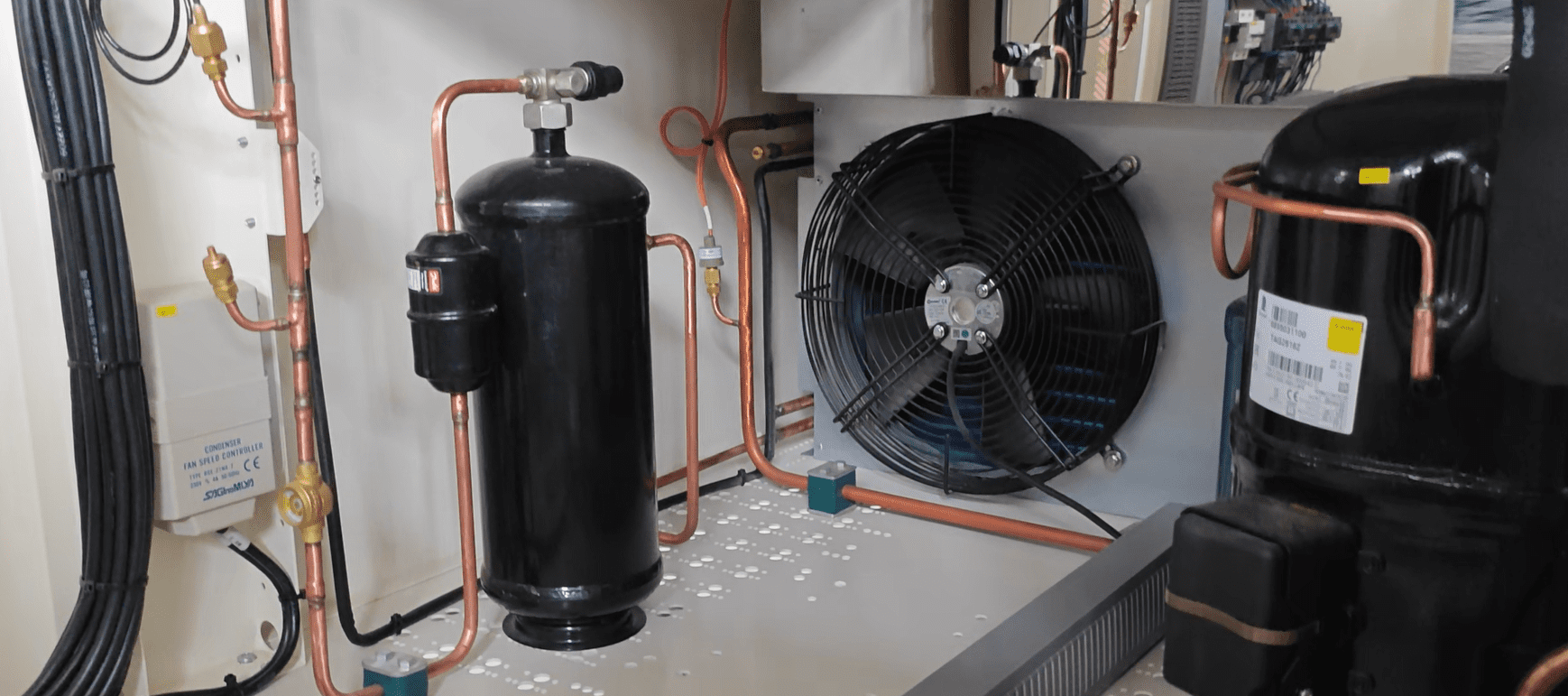Geschrieben von Shirley
Produktmanager, Doaho Test (DHT®)
In laboratory research and industrial testing, simulating environmental conditions is an essential way to evaluate product performance and reliability. Different types of environmental test chambers serve different testing purposes, and among them, Thermostatic Chambers and Constant Temperature & Humidity Chambers are the most commonly used. But what exactly sets them apart? When is a Thermostatic Chamber the right choice, and when is it necessary to rely on a Constant Temperature & Humidity Chamber? This article will provide a clear comparison to help you make the most suitable decision when selecting equipment.
Was ist eine thermostatische Kammer?
A Thermostatic Chamber is an environmental testing device designed specifically for temperature control. As its name suggests, its primary function is to maintain a stable and precise temperature within a defined range, ensuring that samples can be tested or aged under consistent thermal conditions.
These chambers are capable of both high- and low-temperature control, with temperature uniformity, fluctuation, and stability serving as the key performance indicators.
They are widely used for testing and storing electronic components, pharmaceuticals, precision materials, plastics, rubber, semiconductors, and more. Typical applications include thermal aging, long-term stability, and constant temperature storage tests. Thanks to their ease of operation and precise control, Thermostatic Chambers are commonly found in R&D laboratories and quality inspection processes. They are especially suitable when only temperature regulation is required, without the need for humidity simulation.
What Is a Constant Temperature & Humidity Chamber?
As the name implies, a Constant Temperature & Humidity Chamber goes one step further by not only regulating temperature but also providing precise humidity control. This allows samples to be exposed to the combined effects of both variables, offering a closer simulation of real-world conditions.
In practice, such chambers can function as a high humidity chamber, simulating hot and humid conditions to accelerate material aging and assess durability. Alternatively, they can be used as a low humidity chamber, testing how products perform in dry or arid conditions.
Industries such as electronics, automotive, new materials, and pharmaceuticals widely rely on these chambers. For example, printed circuit boards may experience leakage or failure in high humidity, while low humidity environments can cause electrostatic buildup. Long-term testing in a Constant Temperature & Humidity Chamber provides valuable insights into product reliability and lifecycle under diverse climate scenarios.
Key Differences Between Thermostatic Chambers and Constant Temperature & Humidity Chambers
Although both belong to the same family of environmental test chambers, their design and application differ significantly:
- Functionality
- Thermostatic Chamber: Focused solely on temperature control, suitable for tests requiring only hot or cold conditions.
- Constant Temperature & Humidity Chamber: Capable of controlling both temperature and humidity, ideal for complex environmental simulations.
- Testing Dimensions
- Thermostatic Chamber: Emphasizes temperature stability and uniformity, assessing thermal stress on products.
- Constant Temperature & Humidity Chamber: Adds humidity as a variable, better replicating natural environmental factors.
- Cost & Wartung
- Thermostatic Chamber: Simpler design, lower purchase and maintenance costs.
- Constant Temperature & Humidity Chamber: More complex, relying on humidifiers/dehumidifiers, with higher costs.
- Applications
- Thermostatic Chamber: Economical choice for thermal aging, heat resistance, or constant temperature storage.
- Constant Temperature & Humidity Chamber: Essential for reliability testing where moisture sensitivity is a concern, such as electronics or pharmaceuticals.
When to Choose Each Chamber?
Many users struggle with whether to choose a Thermostatic Chamber or a Constant Temperature & Humidity Chamber. The answer ultimately depends on the testing requirements:
- If your tests involve only temperature variables—for example, validating the stability of materials, electronic parts, or drugs under high or low temperatures—a Thermostatic Chamber will meet your needs while keeping costs and maintenance manageable.
- If your experiments require both temperature and humidity variables, such as evaluating reliability under hot/humid or dry/low-humidity climates, then a Constant Temperature & Humidity Chamber is the right choice. This dual-control system better replicates real-world conditions and provides more comprehensive testing data.
In short, Thermostatic Chambers are ideal for budget-conscious users with simpler requirements, while Constant Temperature & Humidity Chambers are indispensable for industries with higher reliability and environmental adaptation standards.
Schlussfolgerung
The biggest difference between a Thermostatic Chamber and a Constant Temperature & Humidity Chamber lies in humidity control. The former focuses on temperature-only testing, making it suitable for cost-sensitive projects or single-variable experiments. The latter enables testing under both temperature and humidity, offering more realistic simulations for industries with strict reliability demands.
If your R&D projects require only temperature validation, a Thermostatic Chamber is an efficient and economical solution. However, if your testing involves humidity-sensitive materials, electronic components, or pharmaceuticals, a Constant Temperature & Humidity Chamber is the superior choice.
Choosing the right chamber not only improves the accuracy and effectiveness of your testing but also helps optimize costs while ensuring product quality. If you are seeking a reliable, practical, and cost-effective environmental test chamber, feel free to reach out to DHT®—we provide professional solutions tailored to your specific needs.


